When the United States declared war on Germany on April 6, 1917, the decision triggered a massive effort to organize, train, and supply U.S. forces for duty overseas.

Hearing that America had declared war, British prime minister David Lloyd George praised Americans’ resourcefulness and ability to get things done. But he was mistaken about how soon U.S. forces could help. He criticized a top German general who predicted that the United States would need a year before it arrived in Europe in force. But the general was right—it was spring 1918 before the majority of U.S. troops landed in France.
Almost immediately after declaring war, President Woodrow Wilson said a half million men would have to join the armed forces. He added that the country would ask for many more soldiers “as they may be needed and can be handled in training.”
In June 1917, General John J. “Black Jack” Pershing, commander in chief of the American Expeditionary Force (AEF), went to Britain and France. He advised the U.S. War Department to send over “at least 1,000,000 men by next May.” At the time, the Allies had 3.5 million men on the Western Front, more than the Germans. But they were tired and discouraged from several years of fighting.
The U.S. military, however, was just not ready. The regular army had no more than 100,000 men. Those men were not prepared for modern warfare. The conflict going on in Europe involved trenches, poison gas attacks, and shelling with high explosives. Soldiers needed to be trained to fight in a type of war that America had never before faced.
This story is from the May/June 2017 edition of Cobblestone American History Magazine for Kids.
Start your 7-day Magzter GOLD free trial to access thousands of curated premium stories, and 8,500+ magazines and newspapers.
Already a subscriber ? Sign In
This story is from the May/June 2017 edition of Cobblestone American History Magazine for Kids.
Start your 7-day Magzter GOLD free trial to access thousands of curated premium stories, and 8,500+ magazines and newspapers.
Already a subscriber? Sign In
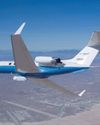
Eye in the Sky
An interview with Joe Piotrowski
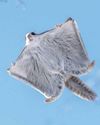
Airborne Animals
Humans have taken to the skies in balloons, gliders, and airplanes-but we're not alone among the clouds. Animals of all sorts have evolved to harness wind power.
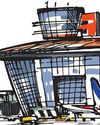
TAKING OFF
The Wright brothers expected airplanes to “take off,” but even they might be amazed at the way the airline industry has become big business. In the past, it was expensive to send something by plane.

GROWTH OF AN INDUSTRY
After their historic flight at Kitty Hawk in 1903, Wilbur and Orville Wright returned to Dayton, Ohio. They spent the next few years making adjustments and building additional versions of their powered aircraft in their bicycle shop.
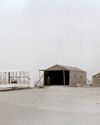
WHY KITTY HAWK?
The Wright brothers searched carefully for the best place to test their gliders and flying machines. Their main concern was for good, steady winds. But they also hoped to find a remote location to allow them to perform tests away from the public eye.
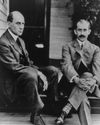
Two Brothers From Ohio
Most people do not realize that the Wright brothers—Wilbur, born in 1867, and Orville, born in 1871—performed various scientific experiments before inventing their aircraft. For as long as anyone in their hometown of Dayton, Ohio, could remember, the Wright boys had worked on mechanical projects.
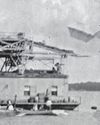
A Helping Hand
May 6, 1896. A group of people who had gathered beside the Potomac River, just south of the U.S. capital, grew quiet. Then, it erupted in cheers as a small, unmanned aircraft took to the skies and flew for more than half a mile. The flight came seven years before the Wright brothers’ first manned, powered flight. The inventor of the aircraft was Dr. Samuel Pierpont Langley.
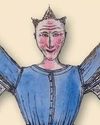
THE IDEA MEN
People dreamed of flying thousands of years before the Wright brothers found success near Kitty Hawk, North Carolina. These dreamers, such as Leonardo da Vinci, studied birds flying and imagined how humans might do the same—if only they had wings. Other men developed a more hands-on approach to the topic. Early inventors made wings of cloth, glue, and feathers and tied these creations to their arms in an attempt to imitate nature.

Da Vinci's 4 Designs
Have you ever wondered how a bird flies? Leonardo da Vinci (1452–1519) did. He thought that understanding how a bird flies would provide the key to human flight. So, what did da Vinci learn from birds?

Silken Wings
Seven hundred years before the Wright brothers began experimenting with human flight, the Chinese had already mastered its secrets—with kites.